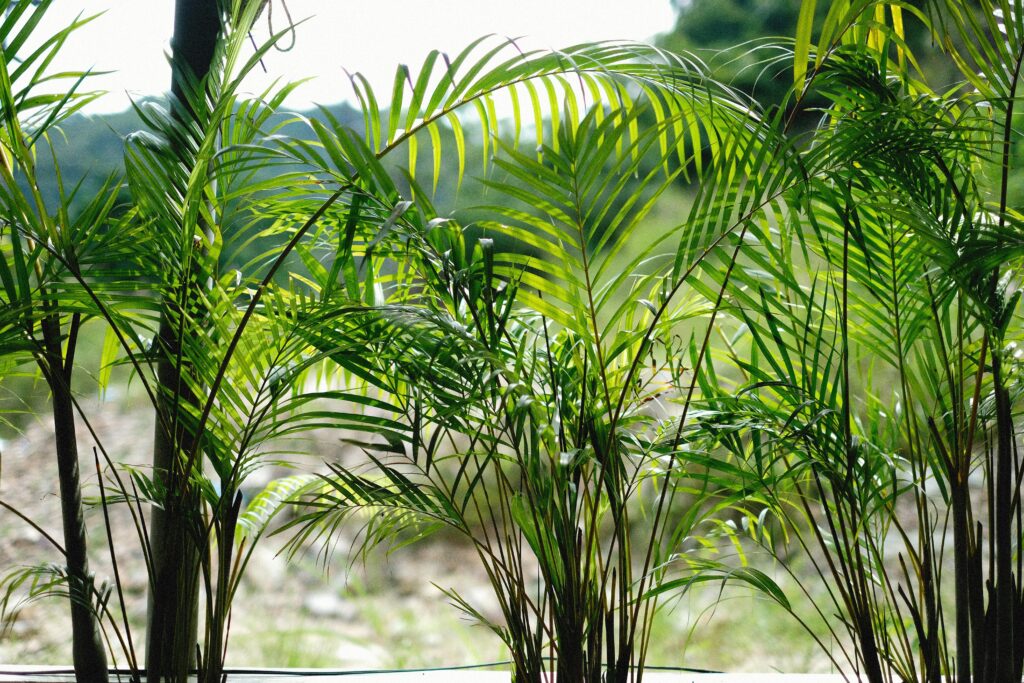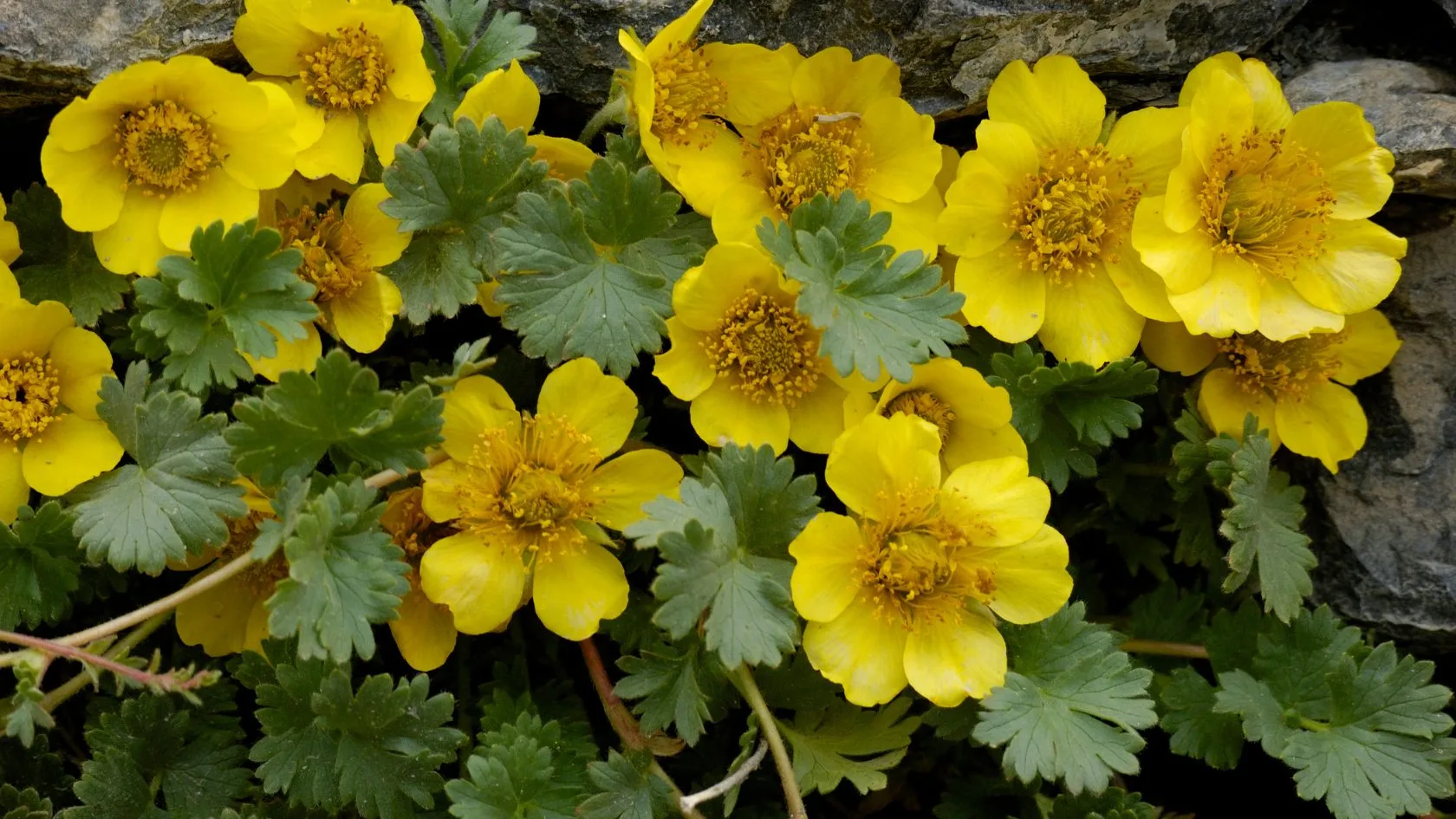The Areca palm, scientifically known as Dypsis lutescens or Chrysalidocarpus lutescens, is a popular indoor palm plant native to Madagascar. It is well-known for its graceful appearance and its ability to purify indoor air. the Areca palm is a beautiful and beneficial plant that adds a touch of nature to indoor spaces while also helping to clean the air we breathe.

Types of Areca palm
There are several types of Areca palms, each with its own unique characteristics. Here are a few common varieties
1. Dypsis lutescens
2. Dypsis decaryi
3. Dypsis baronii
4. Dypsis pembana
5. Dypsis leptocheilos
Benefits of Areca palm plant
Areca palms offer several benefits, making them popular choices for indoor and outdoor landscaping. Here are a few of the main advantages:
Air Purification: The air-purifying properties of these palms are incredible. Studies have indicated that they may effectively remove indoor air pollutants such as formaldehyde, benzene, and trichloroethylene, resulting in improved indoor air quality and the creation of a more hygienic living environment.
Humidification: Areca palms, like many other plants, release moisture into the atmosphere via a process known as transpiration. In arid locations or during the winter, when indoor heating can result in dry air, this can assist raise the humidity levels in indoor spaces, which is useful.
Aesthetic Appeal: Areca palms enhance indoor and outdoor environments with their elegant, fluffy fronds and tropical look. They can be used to accentuate key points in gardens, provide greenery to business buildings, or improve the atmosphere in houses.
Stress Reduction: Studies have shown a positive correlation between being in nature and a lower stress level. Areca palms are excellent interior plants because of their calming green leaves, which may promote relaxation and a sense of serenity.
Noise reduction: Areca palms and other plants may absorb and dampen sound, lowering the volume of noise in indoor areas, it is not as effective as specialist soundproofing materials. In crowded metropolitan locations, this might be very helpful for homes or workplaces.
Simple Care: Areca palms are a low-maintenance plant that may be grown by both rookie and seasoned gardeners. They need frequent watering to keep the soil properly wet, and they do best in bright, indirect light.

Disadvantages of Areca palm

Areca palms have many advantages, but there are also some drawbacks to take into account, especially when it comes to human contact and maintenance needs:
Toxicity: Areca palms have the same potential for toxicity as many other houseplants when consumed. If dogs or small children swallow the plant’s components, it may cause mild to moderate gastrointestinal pain.
Allergies: Pollen or other components of Areca palms may cause allergies in certain people. Skin irritation, respiratory issues, or allergic rhinitis (hay fever) are among the allergic responses that may be triggered by coming into contact with the plant’s leaf or airborne pollen.
Maintenance Requirements: Areca palms need frequent care to grow, even if they are less demanding than some other houseplants. This includes giving the plant enough light, preserving the right humidity levels, and giving it the right amount of water.
Area Requirement: When grown outdoors, mature Areca palms may reach heights of up to 30 feet (9 meters), with some types growing to quite high sizes. They can still reach heights of several feet indoors, so they need room to flourish.
Areca palm plant care
Providing an Areca palm with the ideal environment for growth is part of caring for it. The following is a care guide for Areca palms:
Light: Bright, indirect light is preferred for areca palms. Your plant will benefit from receiving lots of filtered sunlight throughout the day if it is placed next to a window. Avoid leaving it in direct sunlight for long periods of time as this might burn the leaves.
Watering: Make sure the soil is continuously damp but not soggy. Water the plant once or twice a week, or whenever the top inch of soil seems dry to the touch. You might need to water more regularly in the spring and summer when things are developing, but you can cut down on watering a little bit in the winter.
Humidity: High humidity conditions are ideal for Areca palm growth. If the air in your house is dry, think about adding a humidifier or setting a tray underneath the plant’s container with water and stones on it. Occasionally misting the leaves might also aid in raising the humidity content.
Temperature: Warm temperatures between 65°F and 75°F (18°C and 24°C) are preferred by areca palms. The plant’s leaves may be harmed by exposure to cold winds or temperatures below 55°F (13°C).
Soil: Use potting soil that drains well and holds moisture without getting soggy when planting your Areca palm. Peat moss, perlite, and sand together are a good combination. When the plant outgrows its present pot, repot it every two to three years.
Fertilizing: During the growing season (spring and summer), give your Areca palm a balanced liquid fertilizer that has been diluted to half-strength every four to six weeks. Refrain from overfertilizing as this may burn the fertilizer and harm the roots of the plant.
Pruning: To preserve the plant’s beauty and promote new development, remove any yellow or brown fronds on a regular basis. Make clean cuts close to the frond’s base using sharp, clean pruning shears.
Diseases and Pests: Be on the lookout for typical pests like mealybugs, scale insects, and spider mites. Use neem oil or insecticidal soap to treat the plant if you see any indications of a pest infestation. Steer clear of overwatering, since this can result in fungal illnesses and root rot.
Propagation of Areca palm
- There are two main ways to propagate Areca palms: division and seed propagation. Each approach operates as follows:
Separation: - The division is the process of cutting offsets, or pups, off from the mother plant’s base.
- Hold off until the offsets are several inches tall, or large enough to establish their own root system.
- Make sure the offset still has some roots connected before carefully removing it from the mother plant.
- Plant offset in a different container with a potting mix that drains properly. Make sure the soil is always wet and gets bright, indirect light.
- The offset will eventually get established and develop into a new Areca palm.
Seed Distribution: - Areca palms yield seeds inside their drupes, which are tiny, spherical fruits. When mature, these drupes become yellow or orange.
- Pick ripe fruit from an established Areca palm. Take out the seeds from the pulp of the apple.
- To get rid of any leftover pulp or debris, wash the seeds.
- A well-draining potting mix, such as a blend of perlite and peat moss, should be added to a container.
- Sow the seeds ½ inch deep in the ground, then gently cover them with more potting mix.
- In addition to providing warmth and indirect light, keep the soil regularly wet.
- Be patient as germination might take several weeks or months.
- The seedlings can be moved into separate pots if they reach a sufficient size.
Repotting of Areca palm
When an Areca palm outgrows its container or the soil gets compacted and nutrient-depleted, repotting is required. Here’s how to report an Areca palm step-by-step:
Select the Right Time: When an Areca palm is actively developing, the spring or early summer, is the ideal time to repot it. Repotting should be avoided in the winter or when the plant is under stress.
Pick a Fresh Pot: Exchange the old pot with a new one that is 1-2 inches larger in diameter. To avoid waterlogging, make sure the new pot includes drainage holes at the bottom.
Prepare the Potting Mix: Use a potting mix that drains well and is appropriate for palms, or combine equal parts coarse sand, perlite, and peat moss. To improve the soil’s quality, you may also apply a tiny bit of compost or slow-release fertilizer.
Remove the Plant: Gently flip the pot on its side and slide the Areca palm out to remove it from its present container. To release the root ball, you might need to tap the pot’s sides or use your hands to remove the soil.
Examine the Roots: Look for any indications of damage or decay in the roots. Using clean, sharp scissors or pruning shears, remove any dead or rotten roots.
Report the Plant: Fill the new container halfway full with fresh potting mix. After placing the Areca palm in the middle of the container, apply more potting mix to the spaces surrounding the root ball. Make sure the plant is planted at the same depth as it was in the pot before.
Watch and Nurture: Throughout the growth season, make sure the just transplanted plant receives all the necessary attention, such as consistent watering, suitable lighting, and sporadic fertilizer.
Diseases of Areca Palm
Although areca palms are not very prone to illness, they can still cause certain problems, particularly if their care demands are not sufficiently addressed. The following frequent ailments and issues might impact Areca palms:
Root Rot: Root rot is a fungal disease that damages plant roots and can be brought on by overwatering or poorly draining soil. A bad smell coming from the soil, limited development, and yellowing or withering leaves are some symptoms.
Leaf Spot: The Areca palm’s leaves develop dark, asymmetrical patches due to a fungal disease called leaf spot. Leaf browning and defoliation may result from these patches, which may begin as little lesions and progressively grow.
Pest Infestations: Aphids, mealybugs, spider mites, and scale insects are among the pests that are drawn to areca palms.
Yellowing Leaves: There are several reasons why leaves may become yellow, including as exposure to cold drafts, nutritional shortages, overwatering, or underwatering. To stop the plant from suffering more harm, find the root of the yellowing leaves and take appropriate action.
Areca Palm of Vastu
Vastu recommends areca palms frequently because of their fortunate qualities. The Areca palm is connected to Vastu in the following ways:
Good Vibes: Areca palms are thought to draw good energy and encourage peace and wealth in the area they are put in. Their beautiful beauty and rich green leaves provide a sense of plenty and tranquillity.
Air Purification: Areca palms are well-known for their ability to filter the air, which is in line with the Vastu philosophy of preserving a hygienic and clean atmosphere. Areca palms enhance the interior air quality and provide a healthier environment for those who work or live there by removing pollutants.
Bringing Nature Indoors: To create a balanced and harmonious living environment, Vastu emphasizes the need to establish a connection with nature.
Areca Palm for pets
Here are some considerations regarding Areca palms and pets:
Non-Toxicity: According to reliable officials like the American Society for the Prevention of Cruelty to Animals (ASPCA), areca palms are not toxic to pets.
Potential Irritation: Areca palms are normally harmless, but if a pet chews on the leaves or stems of the plant, it might cause moderate irritation.
Areca palms Names In other languages
- Spanish: Palma de areca or Palma amarilla
- French: Palmier d’Areca
- German: Goldfruchtpalme or Gelber Bambuspalme
- Italian: Palma dell’Areca
- Portuguese: Palmeira-dourada
- Dutch: Goudpalm
- Swedish: Guldpalm
- Danish: Guldpalme
- Norwegian: Gullpalme
- Finnish: Kultapalmu
- Russian: Арековая пальма (Arekovaia pal’ma)
- Chinese (Mandarin): 黄槟榔树 (Huáng bīnláng shù)
- Japanese: アレカヤシ (Arekayashi)
- Korean: 아레카야자 (Arekayaja)
- Hindi: सुपारी का पेड़ (Supari ka Ped)
- Telugu: బెటల పాము (Bettala Pamu)
- Kannada: ಅಡಿಕೆ ಮರ (Adike Mara)
- Tamil: அடிகை மரம் (Adikai Maram)
Conclusion
With its lush green foliage and tropical vibe, the Areca palm adds a touch of nature and tranquility to homes, offices, and outdoor landscapes.
FAQs of Areca palm
- What is an Areca palm?
Ans: It’s a houseplant with long, feathery leaves. - Is it easy to care for?
Ans: Yes, Areca palms are pretty low-maintenance! - How much light does it need?
Ans: They like bright, indirect light. No harsh sun! - Do I need to water it a lot?
Ans: Not too much. Water when the soil feels dry to the touch. - Is it safe for pets?
Ans: No, Areca palms are toxic to cats and dogs. - Does it clean the air?
Ans: Yes, Areca palms help remove toxins from your home.






Glad to be one of the visitants on this awing web site : D.